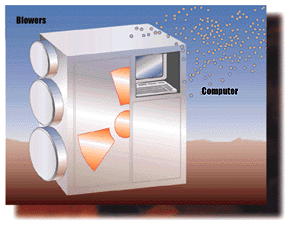
Radionuclide detecors chart of what elements and isotopes are floating in the wind. Of all the detection methods, says Lay, "radionuclides are the least ambiguous. There is no natural process that produces certain Xenon isotopes. Where they see them, they know a nuclear reaction has taken place."
Yet, says Peter Marshall, "that's the method that is really the 'smoking gun'." Wisps of radioactive material eventually escape to the surface of even the most well-buried explosions. By sniffing the air then backtracking based on weather patterns, scientists can draw a footprint of where a nuclear blast could have been detonated. | ||
 |
